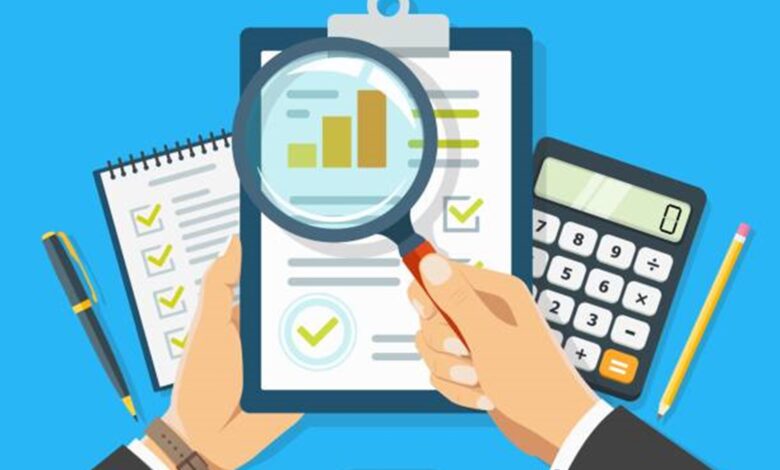Establishing The Foundations and Exploring The Latest Trends: Here’s What’s Happening In The World Of KYC Documents Verification

An increasing dependence on digital technologies in our everyday lives has translated into a whirlwind of exhaustive Know Your Customer verifications. While it may be mentally draining for the users, it is a necessary evil. An absence of digital verifications could mean data breaches, identity theft, minor abuse, and much more. Thus, KYC documents verifications are essential. However, while they cannot, and must not be avoided, we do have the option of making our lives and businesses easier by going towards digital automated verification.
Online Know Your Customer (KYC) compliance has today become of key importance for businesses across various industries. The verification of the identity and legitimacy of clients by means of document verification service is a necessity for preventing fraud, ID theft, money laundering, and many other crimes.
KYC documents verification is not a mere one-size-fits-all all technology, however. Just as different industries have different needs, our process and technology to verify documents is also variable. To add on, science and research are constantly evolving the technology. Thus, navigating this ever-evolving landscape of KYC documents authentication technologies can be challenging.
The Foundations Of This Ever Dynamic KYC Regulatory Landscape
While KYC documents verification might be evolving at an exponential pace thanks to the heaps of research being carried out, the regulatory landscape and policies surrounding it are also evolving. However, at the very core, there are a few principles that have been consistent in acting as the foundation for the KYC documents regulation and checking.
The Anti-Money Laundering Act (AML) Act and Amendments
In the United States, the Anti-Money Laundering Act was first passed in 1986 defining money laundering as a federal crime. Later on, the act saw multiple amendments. The latest is the AML Act Amendment of 2020 which is undergoing crucial amendments to strengthen KYC requirements for financial institutions.
The AMLA of 2020 was introduced to effectively address money laundering-related concerns in the context of the digital age. This amendment is one of the biggest reforms related to financial crimes and involves stricter verification procedures. These verification procedures apply to the general public as well as high-risk clients, PEPs, and other risky situations and transactions. The most prominent advancement with the AMLA 2020 is the development of a beneficial ownership database which, rather than dealing with just the company or single ownership, demands companies to report information about all beneficial owners to FinCEN.
See Also Ceiling Projection Screen: A Smart and Flexible Solution for Multiple Purposes
The Bank Secrecy Act
The Bank Secrecy Act or BSA was introduced in 1970 and regulates financial institutions to create databases of all their actions and interactions with customers and other business entities like partners and suppliers. The BSA is responsible for guidelines on how to manage and collect this data.
An amendment to the Bank Secrecy Act was the 2001 Patriot Act after the September 11 attacks. The Patriot Act 2001 highlights the need for KYC documents verification and CDD or Customer Due Diligence. It contains guidelines on the prevention of money laundering and terrorism financing.
International Organizations To Foster Global Efforts and Harmonization
International organizations such as the Financial Action Task Force or FATF are working actively to promote the standardization and/or harmonization of KYC documents verification standards across the world. The FATF initiative aims to streamline cross-border processing of transactions and ID document checks. Put simply, FATF regulates KYC documents authentication to reduce compliance burdens for businesses that are operating in multiple jurisdictions.
FATF regularly releases recommendations as updates to their KYC documents verification, CDD, AML, etc. regulations. For example, in November 2023, FATF updated a previously released set of recommendations to set an international standard for AML and terrorism financing.
Technology Adoption and Regulatory Scrutiny
Businesses today are increasingly utilizing innovative technologies such as AI and ML for KYC documents verification and facial recognition. While these technologies were not available in the past, today they are in active and widespread use. The mass utilization of technology has set a bar in the process of KYC documents checking creating a whole new KYC documents checklist.
While this was not the case initially, today, technology acts as a foundation for the regulation of KYC documents and related regulations.
Document Verification Trends to Watch
- We are seeing a growing trend towards online and mobile KYC onboarding documents processes. This is driving the demand for online KYC documents verification solutions. OCR and blockchain technologies are helping enable secure and automatic verifications.
- Biometric technologies like facial identification, fingerprint scanning, and others are increasingly integrating into KYC documents and user verification processes.
- Today, the focus on user experience is higher than ever. By balancing rigorous verification alongside a smooth user experience businesses can attain maximum customer retention. It also helps to streamline workflows to minimize friction during the user onboarding and verification processes.
Conclusion
Staying up to date about all the latest trends and developments in KYC document verification is essential for business development. It helps to navigate the ever-dynamic regulatory landscape of KYC documents authentication and ensures compliance. By embracing modern and cutting-edge technologies and also prioritizing users’ comfort, businesses can create smooth and secure onboarding experiences for their customers.
The journey through the KYC processes may be complex, however, with the right effort, insights, and tools, businesses can emerge stronger and more secure.




